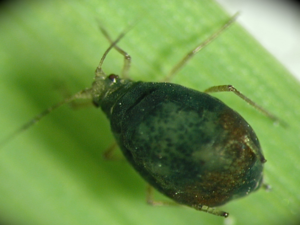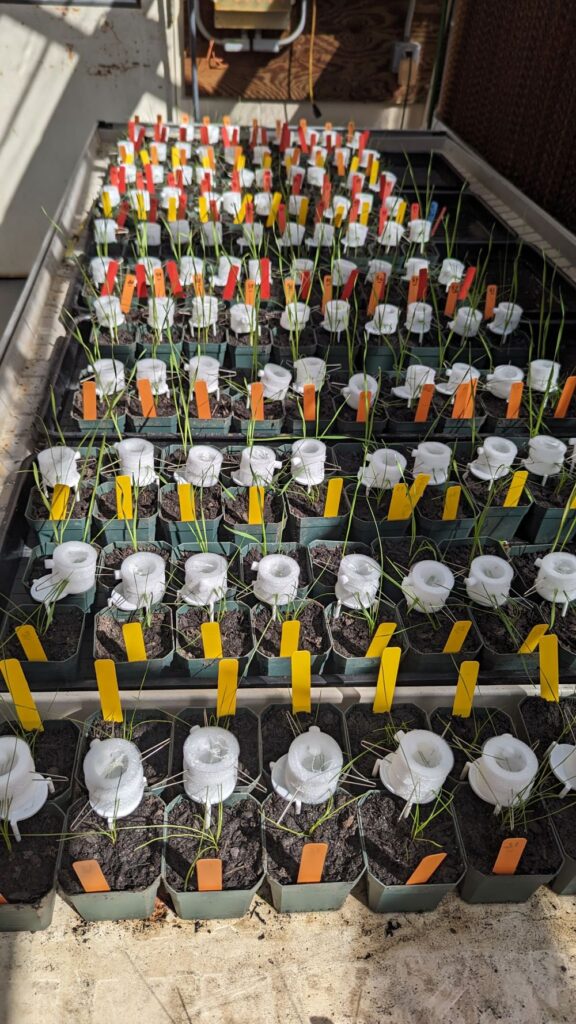
Our program has studied several vector-borne pathosystems over the years, including Pierce’s disease, zebra chip disease, and barley yellow dwarf. We are currently studying host-mediated interactions between insect vectors and other biotic factors that may impact host plants.
In the barley yellow dwarf disease complex, we examine whether endophytes associated with cereal aphids and barley yellow dwarf virus reservoirs (i.e., alternative hosts) can influence BYDV epidemiology in cultivated small grains.
Through other ongoing projects, we are evaluating the potential role of the newly invasive cereal aphid species, Metopolophium festucae cerealium, in disease epidemiology and also studying vector movement between reservoirs and cultivated fields in response to environmental variations (i.e., drought and temperature).
